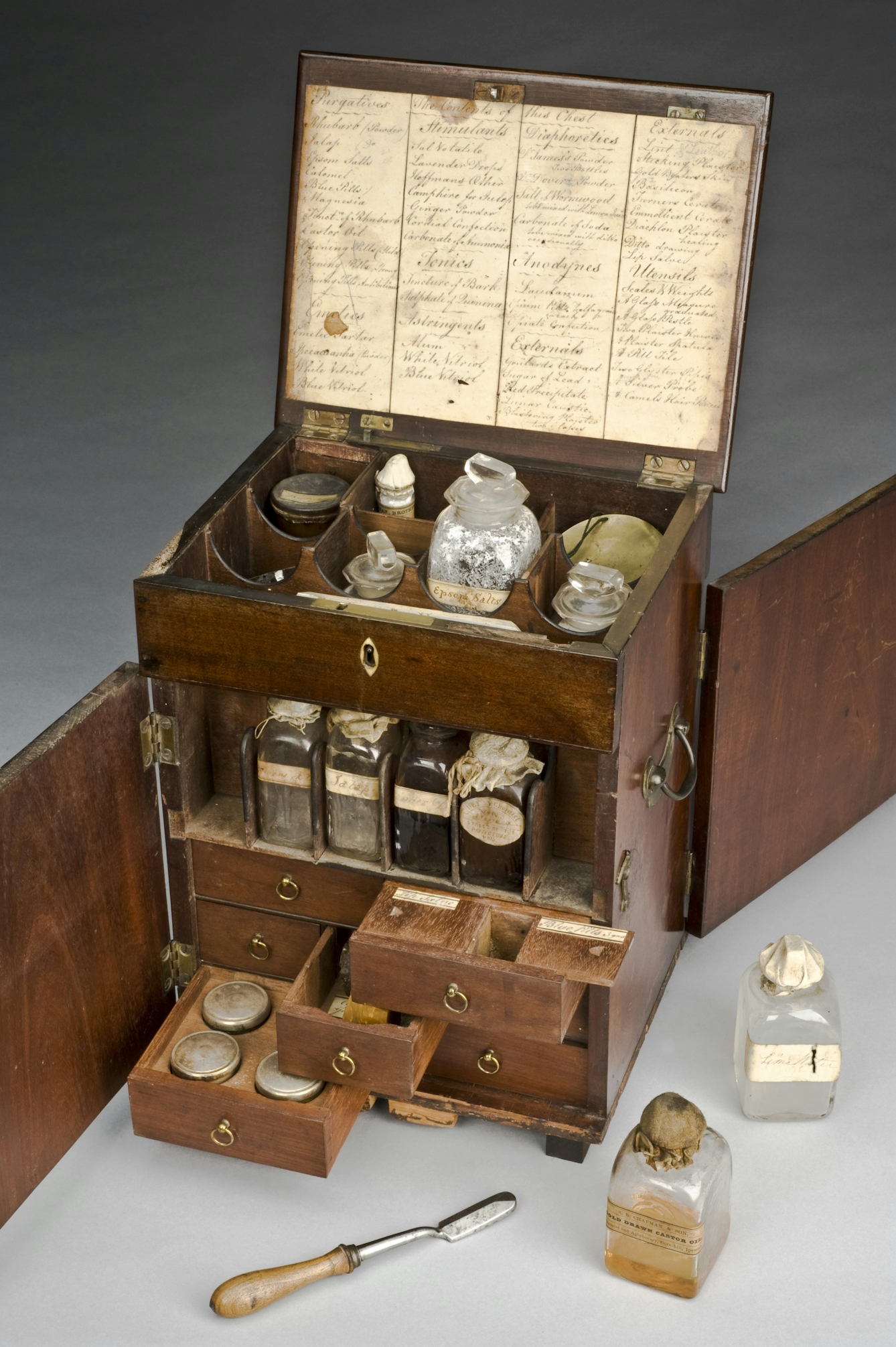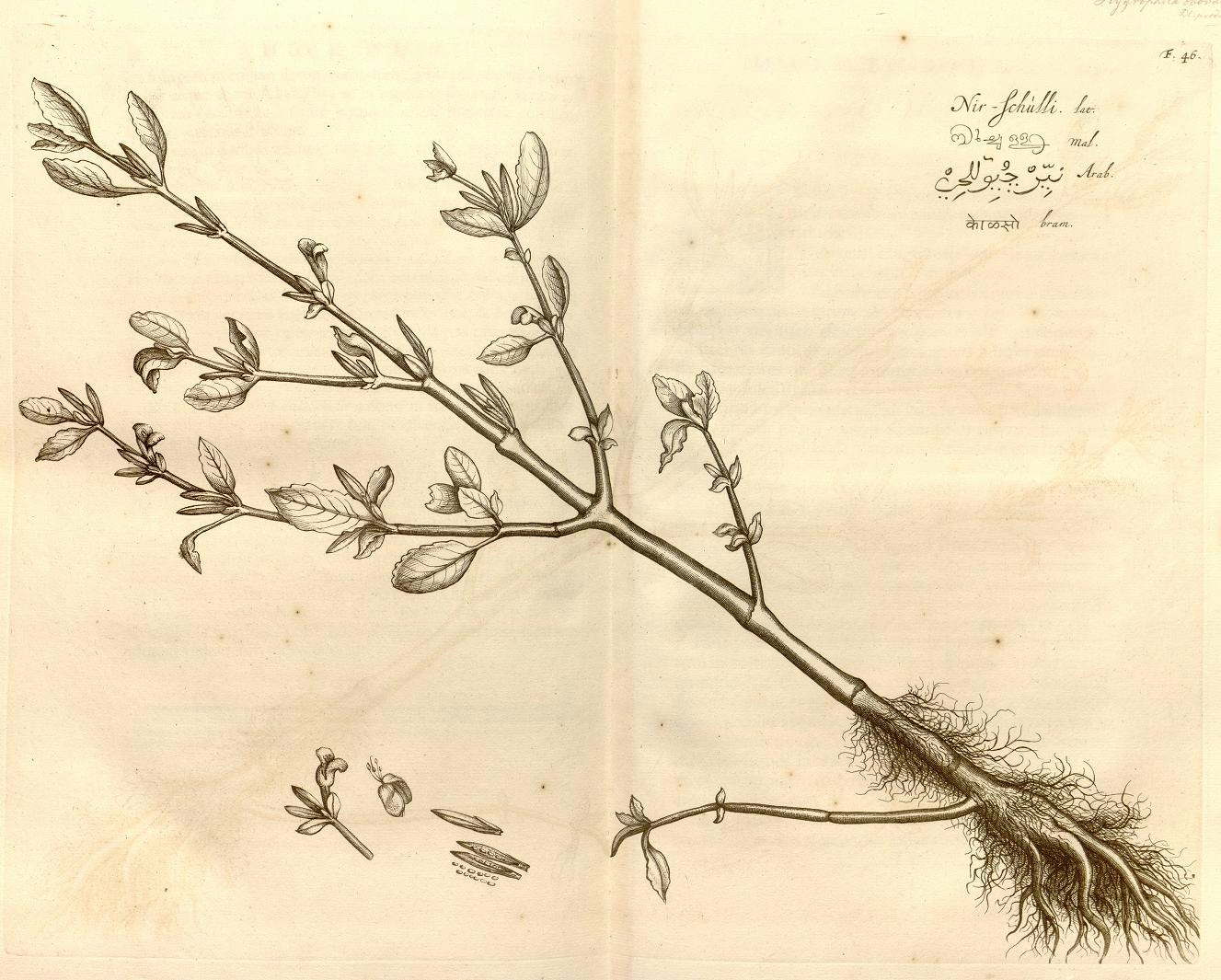Some people use ginger to help with tummy troubles, but for others it has caused more problems than it has solved. We explore the surprising and complex ways that ginger has played a role in preventing sickness through history.
Ginger’s role in cures and courtroom battles
Words by Alice White
- Story
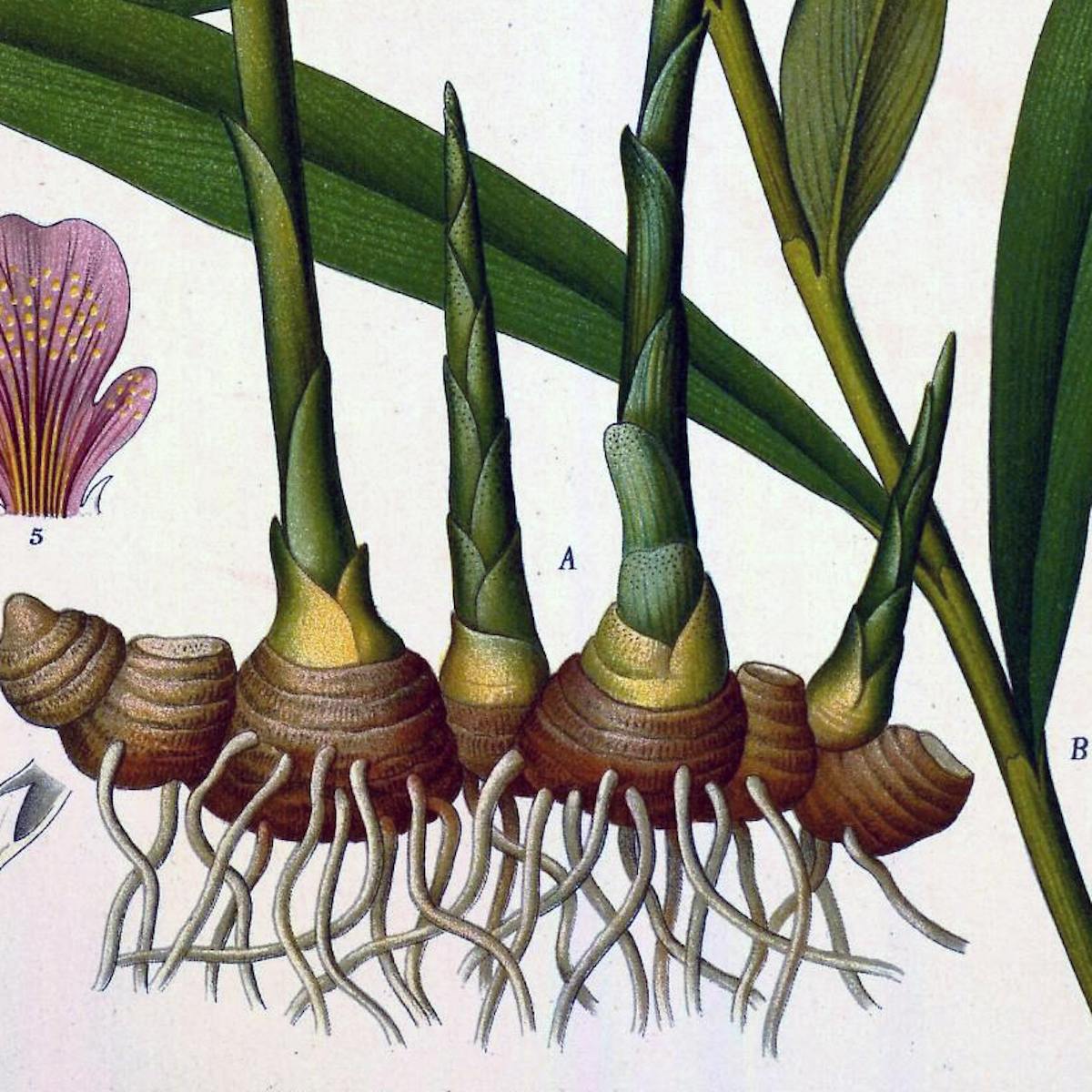
If you've ever sipped on a ginger beer or nibbled a ginger biscuit to ease a delicate stomach (perhaps caused by too much festive indulgence!), you're in good company. Confucius insisted upon always having ginger upon his table, perhaps because in China, ginger has been used to aid digestion and treat stomach upsets for more than 2000 years.
Ginger is revered in Ayurvedic medicine too, where it is known as mahaoushadha, which translates as ‘the great medicine’ and as vishwabheshaja, meaning ‘the universal cure’. With those names, it shouldn’t be surprising that it’s used in more than 250 therapeutic recipes and is even recommended for those who aren’t sick as a preventative: an Indian sutra (verse) recommends that we should all eat fresh ginger before meals to kindle digestive fire, and it is believed to destroy ama (toxins).
Ginger has a long medical history in Europe and America too. A tiny booklet promoting Oxley’s Concentrated Essence of Jamaica Ginger describes it as a “most elegant and certain remedy” for numerous ailments. In the testimonies inside, Mr Spencer is reported to have been “instantaneously relieved of a most violent Windy complaint in his Stomach, which he had been troubled with for fourteen years”.
And in 1832, medical man Thurston Caton wrote to the Central Board of Health to describe how the people of Houghton were using “small doses of calomel and ginger, and bleeding” to try and ease cholera.
Ginger as medicine
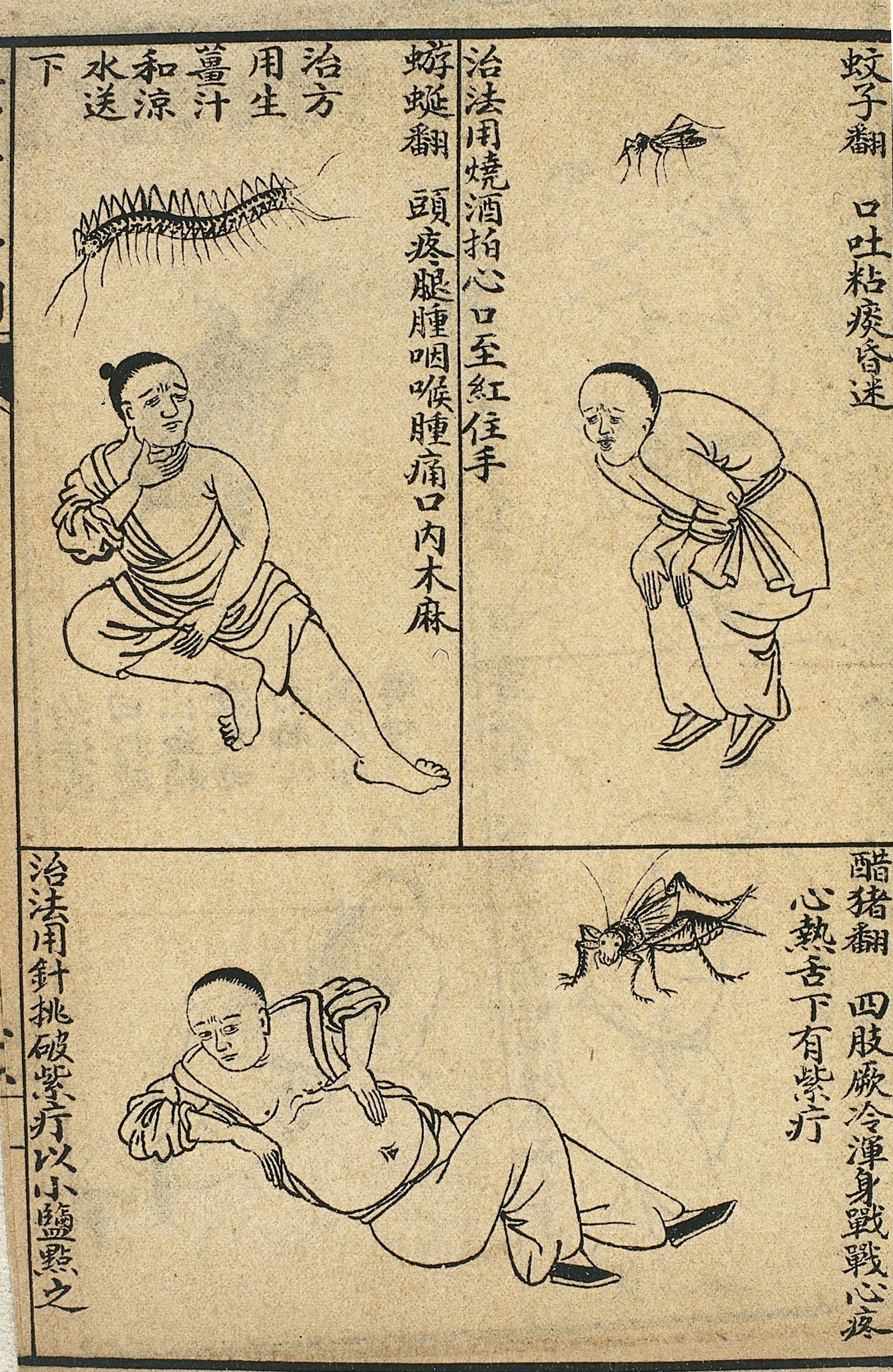
The man collapsed on the left side of this Chinese lithograph has a "fan" disease – the recommended treatment is ginger juice.
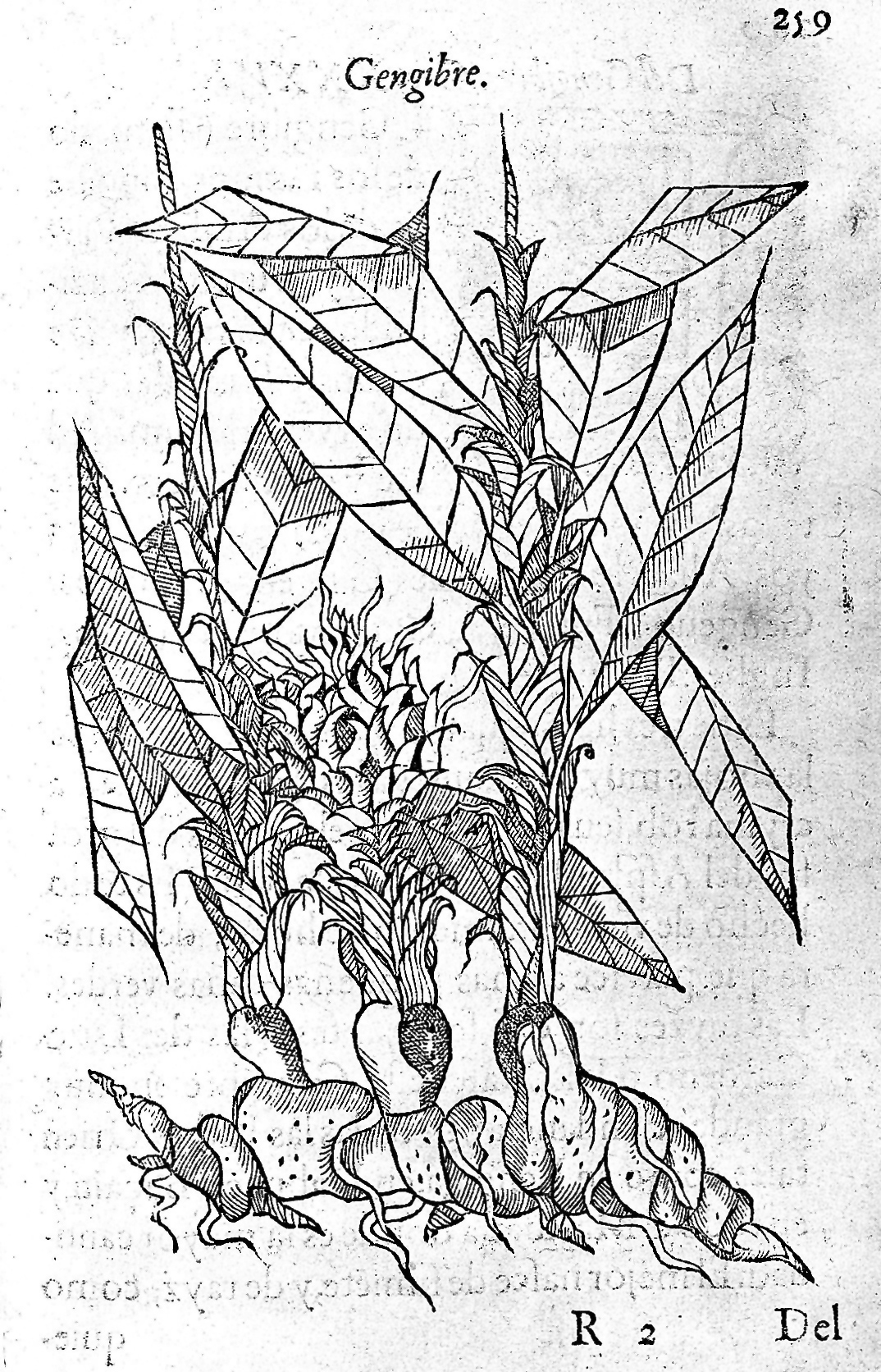
Portuguese doctor Cristóbal Acosta documented the use of ginger in his 16th-century book on Indian medicine.
This 19th-century medicine chest includes ginger along with opium.
Hendrik van Rheede included an engraving of a ginger plant with its name in various languages in his book on medical flora from Kerala.

This illustration of a chemist's shop from 1830 shows customers enjoying soda water and ginger beer.
More recently, clinical trials have been conducted to see whether ginger could be used in alleviating pregnancy-related sickness, travel sickness, and also whether it might reduce chemotherapy-induced nausea and vomiting. The initial results look promising, and researchers have called for further studies to be conducted. The oils in ginger known as gingerols are also currently being investigated to see whether they might be used or adapted to help treat cancerous tumours.
There are two remarkable incidents from history where ginger-based products played a quite different role in shaping people’s health: rather than acting as a medicine, in these two cases the products made people ill enough to result in monumental changes to laws. These laws now protect millions of us from sickness.
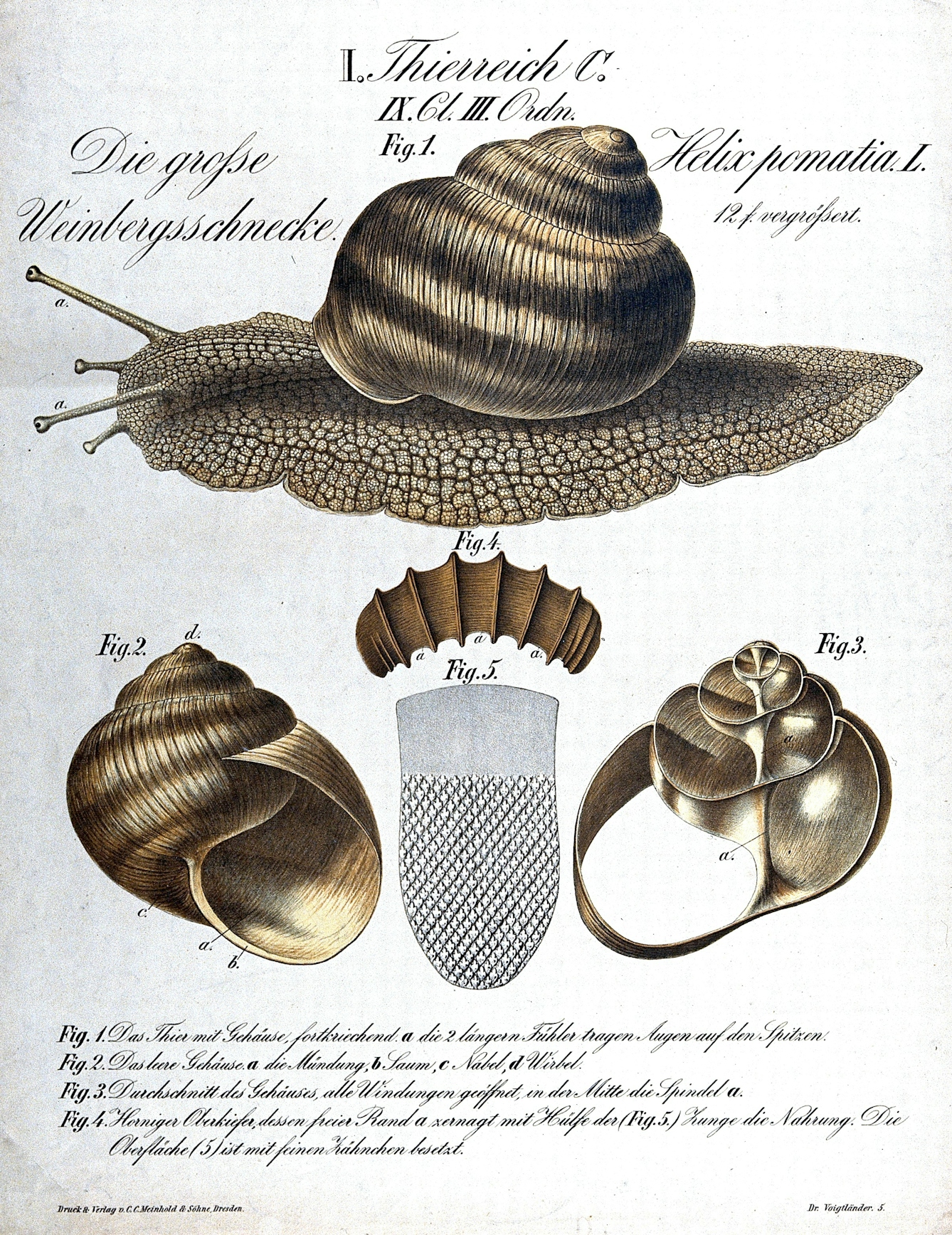
This snail is specifically described as edible, unlike the one Mrs Donoghue encountered in her ginger beer.
A slimy sickness
In 1928, Mrs Donoghue from Glasgow met a friend in a Paisley café and ordered a ginger-beer float. After she had already taken a few sips, a decomposed snail tumbled out of the bottle of ginger beer. She felt sick at the sight. Later, she had to be admitted to the Glasgow Royal Infirmary for severe gastroenteritis and shock. Mrs Donoghue decided to sue the maker of the ginger beer, David Stevenson.
At this point in time, the law stated that someone was only liable for harm if they had withheld information about something being dangerous, or if there was no warning about inherent dangerousness. Ginger beer is not dangerous, and the manufacturers hadn’t lied about it – but it had made Mrs Donoghue poorly. The judge Lord Moncrieff said that:
Tainted food when offered for sale is, in my opinion, amongst the most subtly potent of ‘dangerous goods’, and to deal in or prepare such food is highly relevant to infer a duty. I fail to see why the fact that the danger has been introduced by an act of negligence, and does not advertise itself, should release the negligent manufacturer from a duty.
However, Stevenson won an appeal against this judgement. Not satisfied, Mrs Donoghue decided to escalate her case, and filed a petition to the House of Lords on 25 February 1931. After months of waiting, they finally gave judgement on 26 May 1932. Lord Atkin explained their decision:
The rule that you are to love your neighbour becomes in law, you must not injure your neighbour… It will be an advantage to make it clear that the law in this matter, as in most others, is in accordance with sound common sense.
Basically, people should take reasonable care not to harm others. Mrs Donoghue received a settlement from the manufacturers. The case had wider resonance though, changing the law across the world by creating the modern concept of negligence and setting out the principles of duty of care. Lord Atkin argued that, as well as being relevant to food and drink, a duty of care was owed by all manufacturers of “articles of common household use”, such as medicine, soap and cleaning products. The regulation of the safety of these items today came into being as the result of Mrs Donoghue’s contaminated ginger beer.
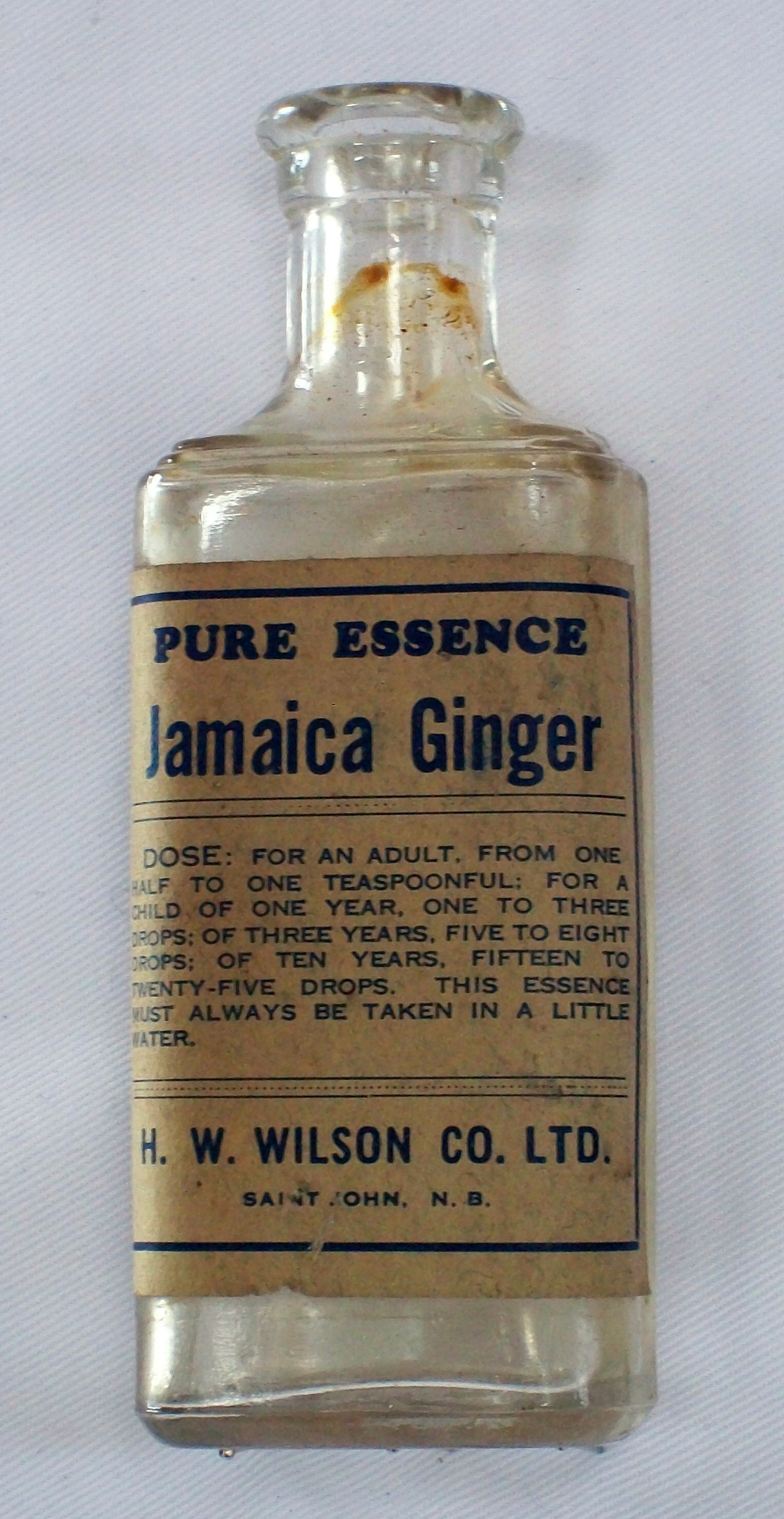
A small glass bottle of Jamaica Ginger essence, commonly known as ‘jake’.
Jamaican ginger blues
Almost at the same time that the Donoghue v. Stevenson case was being played out, on the other side of the Atlantic another shocking case involving ginger occurred that also resulted in lawmakers doing more to protect people from getting sick.
From the 1860s, extract of ginger or ‘Jamaica Ginger’ or ‘jake’ had been used as a medicinal tonic. It contained around 80 per cent alcohol, and two drops of it in a tablespoon of warm water mixed with sugar was used as a dose to ease stomach ache. When prohibition came along, the authorities believed that, despite the high alcohol content, the extremely high concentration of ginger would make the solution too irritating to drink, but it still became a popular alternative to whisky. In some places, chemists got around the ‘ginger-burn’ by mixing jake with milk drinks. One man recalled:
Why, doggone it… In the drug store that I used to go into I’d see boys and girls sitting in the side booths drinking jake by the bottle, mixed up with other drinks. No one was stopping them and the druggist would keep on selling it to them until they staggered out drunk.
In other cases, adulterants like castor oil were used, but in 1930 the price of castor oil rose.
Nobody could have predicted the catastrophe this would cause. The search for cheap bulking ingredients for bootleg booze led two men from Boston, Harry Gross and Max Reisman, to start using triorthocresyl phosphate (known under the trade name Lindol) to dilute the ginger in their jake.
This toxic gingery mix had a terrible effect on anyone who drank it: the nerve damage it caused meant that they lost control of crucial muscles and walked with drooping feet and hands, like marionettes, walking with a ‘tap-click’ upon the pavements. This strange walk had a huge cultural resonance and was described in many blues songs about ‘jake leg’.
People began to panic as the number of people afflicted with mysterious ‘ginger paralysis’ rocketed. The authorities seized barrels and shipments of jake and researchers frantically sought to uncover the ingredient that had caused the epidemic. One medical commentator observed that the only thing to be said in defence of the bootleggers was that no one had any idea that Lindol could cause such a toxic effect.

An illustration of a ginger plant from a materia medica.
Gross and Reisman were eventually apprehended and given two-year suspended sentences, and their company was fined $1,000. The economic loss caused by their terrible experiment was estimated at £10,000,000 at the time – the equivalent of around £334,200,000 today.
But worse than the economic cost was the cost to the victims. More than 20,000 people were afflicted. Without any known cure, people resorted to a variety of desperate measures, from drinking crude oil to galvanic electricity treatments. Many were left both uncompensated and with permanent paralysis, and the worst affected were the poorest communities. They often didn't even receive sympathy for their suffering, because some felt they'd brought it on themselves through illicit drinking.
Not everyone was unmoved by their case though. In the 1933 book ‘100,000,000 Guinea Pigs: Dangers in Everyday Foods, Drugs, and Cosmetics’, the ginger paralysis incident was used as an example to argue that people needed protection from products with dangerous side effects or defects. The book was a bestseller, and is credited with producing the 1938 Federal Food, Drug and Cosmetic Act. This Act is still in force (in modified form) today and governs food additives, colourings, medical devices, homeopathic medications and even bottled water.
This winter, as you sip a warming ginger tea or munch on a ginger nut to ease your stomach, spare a thought for Mrs Donoghue and the thousands left suffering with ‘jake leg’, whose shocking experiences paved the way to a safer society and greater protections governing what we eat and drink.
If you enjoyed this article, you might also like Ayurvedic Man: Encounters with Indian medicine, at Wellcome Collection until 8 April 2018.
About the author
Alice White
Alice is a digital editor and Wikimedian for Wellcome Collection. Before joining Wellcome, she researched frogs, moustaches, psychiatry in World War II, and British science-fiction fans.
